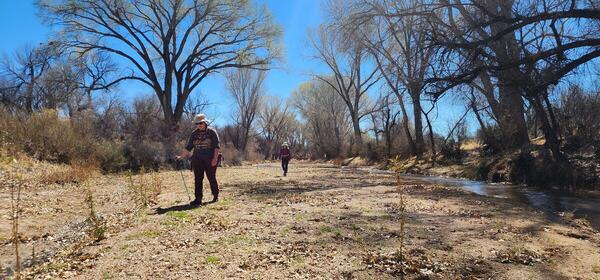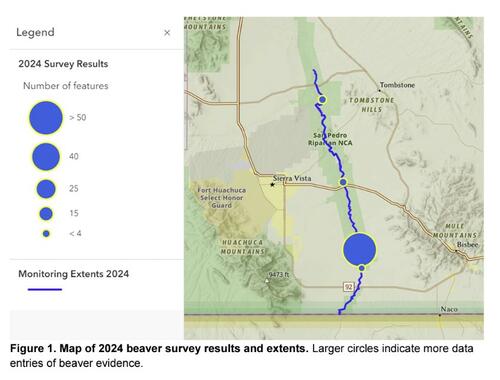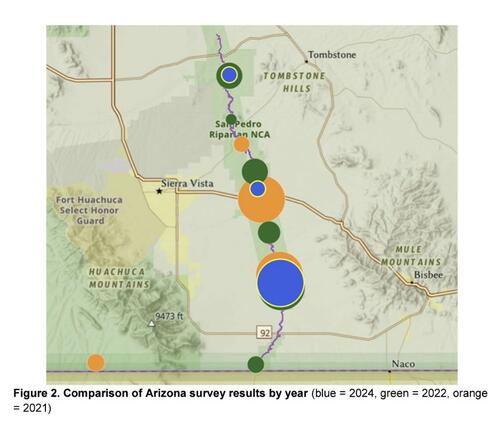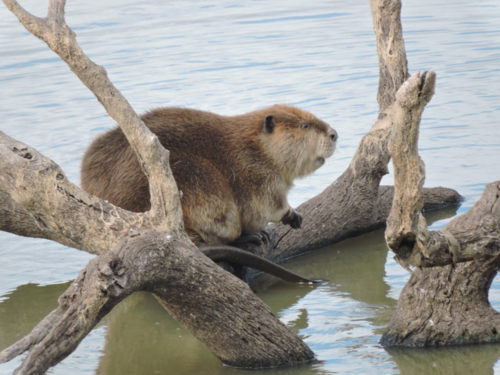The 2024 Binational Beaver Survey Methods & Results...Part 1!
Read the full report here
Beavers once thrived in the rivers of southeastern Arizona but were extirpated over 100 years ago due to extensive trapping. To restore this keystone species and their crucial ecosystem services, the Bureau of Land Management reintroduced beavers to the San Pedro River. Since then, Watershed Management Group and partners have been monitoring the beaver population through annual bi-national surveys.
but were extirpated over 100 years ago due to extensive trapping. To restore this keystone species and their crucial ecosystem services, the Bureau of Land Management reintroduced beavers to the San Pedro River. Since then, Watershed Management Group and partners have been monitoring the beaver population through annual bi-national surveys.

Here's a brief overview of the results:
- Population Estimate: The 2024 survey estimates approximately 11-14 beavers along the U.S. stretch of the San Pedro River, slightly down from the 2022 estimate of 13-17 beavers.
- Beaver Activity: Volunteers recorded 174 data entries, identifying five clusters of beaver activity. Two clusters were large enough to be considered active family groups, while the remaining clusters indicated roaming beavers.
- Vegetation Impact: Beavers were found to prefer willow trees in 2024, a shift from their preference for cottonwood in 2022.
For more detailed information, you can access the
full 2024 Bi-National Beaver Survey report here.

What Does This Mean?
The declining beaver population is concerning, as beavers play a vital role in maintaining healthy river ecosystems. Factors such as fluctuating water levels during monsoon seasons and increased predation by local species may be contributing to this decline. Continued monitoring, research, and community engagement are essential to address these challenges.
Looking Ahead:
WMG's "Release the Beavers" campaign aims to support beaver reintroduction, enhance local ecosystems, and improve habitats for native species. In an exciting development, WMG is leading efforts to reintroduce beavers into Ciénega Creek by the end of 2025.

Get Involved:
-
Find out more about the San Pedro beaver survey results here
-
Read more about the 3rd Annual Binational Beaver Survey here
-
Join the River Run Network to stay updated on our "Release the Beavers" campaign and future restoration efforts. Together, we can make a difference in restoring our river ecosystems.
Acknowledgments:
We extend our gratitude to the dedicated community science volunteers, partner organizations, and funding partners, including The Nature Conservancy and National Park Service Southwest Border Protection Program. Special thanks to co-authors Paul Strong, Conservation Ecology Intern, and Catlow Shipek, Sr. Program Director, for their invaluable contributions.
Land and Water Acknowledgment:
Watershed Management Group acknowledges that we live, learn, work, and engage with the community on the ancestral lands of the Hohokam and Sobaipuri, and those of the Apache, Pascua Yaqui, and Tohono O’odham, whose relationship with this land continues to this day. Learn more about the indigenous communities and the history of the land at www.native-land.ca





